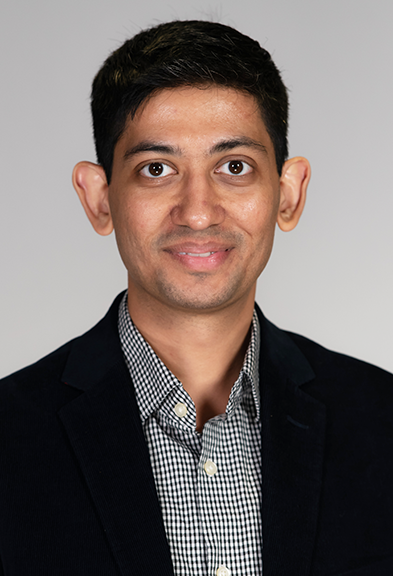
Modeling Excellence, Chatterjee Brings Skills and Collaboration to Engineering Solutions
When people comment on Sumon Chatterjee’s strong computational and modeling skills, he sees it as much a comment on what he learned at CEE as on his own innate abilities.
“I think people assume that once you’re from CMU with a degree from CEE, you have the strong technical foundation and the basics that will help you succeed,” Chatterjee (MS ’14) says.
Chatterjee, who was raised in Kolkata, India, earned his BS in Civil Engineering from Jadavpur University, in Kolkata in 2012. When he began researching graduate programs, he looked at a reputation for excellence, research, faculty, and coursework. With his strong math and chemistry skills, Chatterjee wanted to go to a school where he could focus on addressing the kinds of pollution and water contamination issues he had been sensitized to during his early education. Because it consistently ranked at the top in those areas, offered flexibility in the program, and had a strong alumni network around the world, CEE seemed to be the perfect fit, he said.
“It’s a very strong environmental program that prepares you for the real world,” he says, specifically citing Fate-Transport, Civil Systems Pricing/Planning, and Remediation Engineering as three classes that gave him both the quantitative and qualitative foundation need to excel in his field.
He says participating in a summer research project with former CEE faculty member Dave Nakles on Enhanced Oil Recovery (EOR) and carbon sequestration gave him invaluable experience in technical writing, troubleshooting, and thinking outside-the-box. He says he was able to continue with the project into his final semester as a graduate research assistant.
Chatterjee recently joined the Toronto, Canada, office of Arcadis, a Netherlands-based global engineering design and consulting firm where he is investigating per- and csubstances (PFAS), a group of manmade chemicals that is found in firefighting foams, nonstick cooking surfaces, food packaging, and other products. PFAS are a large group of emerging contaminants that do not easily degrade in the environment, are widespread and are linked to adverse health effects. Studies have shown that once they get into the body through the consumption of water, they stay there for years.
“My work now is focused on investigating these chemicals in different media – soil and groundwater, and also studying them in drinking water, which is receiving more regulatory attention,” he says.
As a project environmental engineer, Chatterjee’s work involves using high-resolution tools and creating three-dimensional conceptual site models, using geology, hydrogeology and groundwater contamination data.
Prior to starting work with Arcadis, Chatterjee was an environmental engineer and project manager in investigations, remediation, and regulatory compliance projects for AECOM, in the Washington, D.C. area. Additionally, he has been very involved in the American Society of Engineers and Engineers Without Borders (EWB). In addition to serving in several leadership positions with EWB, he was part of an effort to help the residents of Cedar Gulch, SD, whose drinking water had excessive levels of gross alpha and combined radium.
Chatterjee credits his success in no small part to his time at CEE. He says the rigor of the academics, the collaborative environment, the support of faculty, staff, and CEE community – including team-building activities such as canoe and ski trips, and a talent show - prepared him to bring a high standard of expertise to the technical aspects of his job, and a strong sense of community away from home.